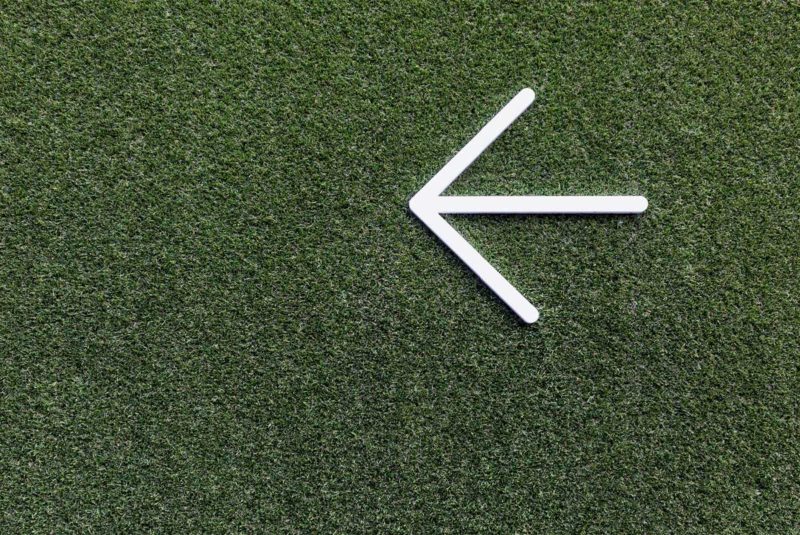Ever wish you could just snap your fingers and make your student loans disappear forever? With student loan payments deferred during the pandemic, many people are wondering if full student loan forgiveness under Biden might be on the horizon.
Not so fast with the “ta-daaa,” though.
While the government may not be ready to wipe away student loan debt for everyone, there are still ways to erase your student loans.
The path to student loan forgiveness in 2021 isn’t as easy as we’d all hoped it would be. Not everyone qualifies to have their loans forgiven, but read on to figure out if you do. 🤔
What Is Student Loan Forgiveness?
If you meet its requirements, the government may forgive all of your federal student loans (or what’s left of them) through a student loan forgiveness program.
To put it in sounds-too-good-to-be-true terms: Forgiveness means you no longer have to make student loan payments.
It’s true – but it comes with a big exception. Student loan forgiveness only applies to federal student loans. Unfortunately, you can’t get private student loans forgiven.
How Does Student Loan Forgiveness Work?
To qualify for student loan forgiveness, you need to apply through specific programs (more on those later).
Each loan forgiveness program has its own qualifications. For example, to qualify for student loan forgiveness through the teacher’s program, you’ll need to work in a qualifying school for 5 straight years.
Keep in mind that you can’t receive forgiveness for student loans you’ve defaulted on. If you’ve defaulted, you’ll need to get your loans back in good standing.
Is Student Loan Forgiveness the Same As Discharging Your Loan?
Many people use the terms “forgiveness” and “discharge” interchangeably when they talk about student loans – but they’re not the same thing.
With student loan forgiveness programs, you’re no longer required to repay your loans because of your chosen career path and other eligible criteria.
With a discharge (sometimes referred to as a “cancellation”), you don’t have to pay your loans because of other circumstances. For example, if the school you went to closes or you have to go on permanent disability, you may qualify for loan discharge.
Top Student Loan Forgiveness Programs
If you’re just starting your college journey or thinking about going back to school, learning about these forgiveness plans now can help you get a better picture of your financial future.
1. Income-driven repayment forgiveness
With this repayment forgiveness program, you repay your student loans based on your income. Once you’ve made a certain number of monthly payments, the rest of your loans will be forgiven – no matter what the remaining balance is.
The cool thing about income-driven repayment plans is that you can qualify for them regardless of your career choice.
Income-Driven Repayment Plans
| Income-Contingent Repayment | Payments are recalculated each year based on your income, the amount you owe on federal loans and your family size. Expect to pay 20% of your discretionary income. Eligible for forgiveness after 25 years |
| Income-Based Repayment | Pay 10% – 15% percent of your discretionary income. Eligible for forgiveness after 25 years |
| Pay As You Earn (PAYE) / Revised Pay As You Earn (REPAYE) | Make maximum monthly payments of 10% of your discretionary income. Eligible for forgiveness after 25 years |
Many people’s ears perk up at the sound of an income-driven repayment plan. 🐰 But you might get rid of your debt quicker if you use one of the direct-forgiveness plans listed below.
2. Teacher loan forgiveness
If you meet all of the requirements, you may be eligible to receive up to $17,500 in loan forgiveness.
Maybe it’s your dream to become a teacher (respect!), but you’re worried your salary might keep you trapped in student loan debt forever. You should definitely have a look into teacher loan forgiveness programs.
To qualify for teacher loan forgiveness, you need to work for 5 years straight as a full-time teacher in a school that serves low-income families. You also need to have a bachelor’s degree and full state certification (no problem, right?).
Even if you received your certification through an alternative route, you’re still considered highly qualified and eligible.
3. Public service loan forgiveness
If you work for the government or a qualifying nonprofit, you can apply for the Public Service Loan Forgiveness (PSLF) Program.
To qualify for public service loan forgiveness, you must:
- Work full-time for a U.S. federal, state or local government, a tribal government or a nonprofit organization
- Have Direct Loans (or consolidate your federal student loans into Direct Loans)
- Make 120 monthly payments in a row under an income-driven repayment plan
Military loan forgiveness is a part of public service loan forgiveness, too. It’s available to active-duty service members, veterans in any branch of the U.S. Armed Forces and non-combat personnel. Non-combat personnel includes positions like military dentists, doctors, and other health care professionals (thank you, all!).
Serving in the military may also qualify you for special benefits related to student loans, like interest rate caps and more flexible repayment plans.
If you’ve been holding off on paying student loans because of the CARES Act, don’t sweat it.
- Suspended payments still count toward the 120 payments needed to qualify for PSLF
- The Biden administration has suspended student loan payments until August 31, 2022[1]
4. State-sponsored loan forgiveness
Certain states have special forgiveness programs for licensed teachers, doctors, nurses and lawyers.
For example, New York has a loan forgiveness program for residents who have worked full-time as a district attorney, assistant district attorney or indigent legal services attorney for at least 4 years, but no more than 9 years.
Look into your state’s programs to see what you may qualify for. And here’s something to note: Forgiveness programs are only for state residents. If you went to college in a different state and you no longer live there, you won’t qualify for that state’s loan forgiveness programs.
5. Nurse loan forgiveness
While nurses have several loan forgiveness options, the Nurse Corps Loan Repayment Program is the only one specifically designed for nurses.
Under this program, you can qualify for loan forgiveness if you work in an underserved area at a critical shortage facility. 🙏
If you qualify, you can have up to 85% of your unpaid nursing education student loan debt forgiven.
Nurses can also qualify for public service loan forgiveness if they work for an organization owned by a nonprofit.
Forgive and Forget
There are lots of options out there when it comes to student loan forgiveness. You should never let potential income restrictions stop you from pursuing your dream career. Look into these programs if you’re unsure about paying off your student loan debts in the future.
The Short Version
- There are a variety of student loan forgiveness programs that relieve borrowers from having to pay back the rest of their loans
- Eligibility for these programs depend on your career, income, location and more
- You can only receive forgiveness on federal student loans that are not in default
U.S. Department of Education. “Biden-Harris Administration Extends Student Loan Pause Through August 31.” Retrieved April 2022 from https://www.ed.gov/news/press-releases/biden-harris-administration-extends-student-loan-pause-through-august-31




